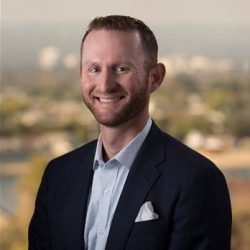
About Clarizen

Clarizen has round 1,000 customers and offices in Tel Aviv, San Mateo and London with just under 200 employees. As a private company, it does not yet publish revenues, and Zilli would only confirm that the company is growing. While around 65% of its customers are in North America and 35% in Europe, two of its largest customers are European: Publicis and Siemens.
Clarizen last obtained funding in 2018 led by K1. Will there be another round or an IPO?
“Nothing in the near term. I’m a firm believer that private equity in the software world is the way forward, and I’ve personally been through the experience of that race to go public and the liquidity it provides and the funding and so on. For a long time, it was the only model for software companies. The private equity world is providing not just funding, but knowledge and experience in a lot of cases far beyond what most of the venture firms are providing. We have a great partner in K1; they are helping us grow faster than we would otherwise.”
Any acquisitions?
“Nothing imminent, but we’ve got plenty of funding and plenty of capital. So I will say we are always on the lookout.”
30, 60, 90 days
Zilli joined the company at the start of the pandemic and lockdown. It meant that he spent far less time in a plane than originally planned but was able to learn and understand the business faster than he originally thought he would.
Zilli first framed the challenge that he was set.
“The challenge that our board saw before I ever joined was making sure we can keep up with demand. This was before COVID. That has only increased since people are now struggling with visibility into work as they’re not sitting next to their colleagues day in and day out.”
30 days
“In my first 30 days, I spent a disproportionate amount of my time with customers. As a former customer, I had a bit of context. I kept hearing about them having a system of record for work and how they’ve increased productivity. There was one story in particular. How in the midst of COVID, when every executive came through looking for budget cuts, they were able to demonstrate exactly how every potential cut would impact their business and not surprisingly defend against those cuts. I was able to connect that to our product direction and our partner direction and start to see where we had been underserving the market. Also, where we had opportunities to improve. I learned more in my first 30 days because of the current situation, than I ever could have imagined”
60 – 90 days
What happened next?
“Sixty and ninety days then came down to the product direction and where we saw the investment opportunities. How do we shift and deploy our resources against that? There are a couple of areas where we’re going to continue to invest.”
The first focus is on developing agile work solutions for customers, leveraging machine learning. Zilli expands on why this is important:
“The shift that we’ve seen happening in the last quarter is going from a world where companies might have a few hundred or 1,000 people that are logging into solutions every day to help them manage their work in the new world. Today, that’s more like 90% to 100% of their companies. In most cases, there are people in every organisation that are trying to manage complex portfolios. On the one hand, there’s the other side of the organisation who just need help managing day in and day out agile work and providing enough exposure to their teams and their managers. We have to keep investing there and making sure we’ve got our focus on product and engineering to stay ahead of that and develop the right solutions for the market there.
“And then, of course, the other area that continues to be critical, as you know, as we move past the world of just being a system of record, for work, and in a world where our systems can start to educate our customers on how they should be deploying resources, how they should manage budgets, through the use of machine learning, and so on. We need to make sure that we always have advanced innovation out there that we’re focused on kind of developing those solutions.”
On Priorities
What are your key priorities as CEO? Now you have a better understanding of the business.
“Number one, we are focused first and foremost on helping our customers manage all of these changes, and we can be a partner in that, and we can be very flexible in how we do that. I’ve got my teams out making sure that we are understanding the impact of COVID on everybody’s business and looking at ways we can help those customers outside of a transaction.
“Number two, we’ve got a pretty significant roadmap of innovation in front of us. We are leveraging the fact that customers are willing to give us a lot of feedback and making sure that we are perfectly attuned to what they need. We’ve got to spend the next two quarters continuing to develop and deliver innovation, and we’re lucky in our financial position as Clarizen and to continue to make those investments because we keep seeing demand for our solutions go up.
“The third is around the partnership and strategic partnership front. We see demand from the customer base; we see this increased demand from partners in particularly in the PPM realm who we have not traditionally partnered with consistently. So we’re focused pretty heavily on growing and building a partner channel far beyond what we’ve done historically at Clarizen.”
On Partnerships
Zilli intimated that Clarizen would make some announcements in the coming weeks around new partnerships. This is an effort that Zilli has championed. He explained that in the past Clarizen has partnered with major systems integrations such as Deloitte and EY but in individual projects. He is helping to drive more permanent relationships.
Zilli is also looking to build better technology partner relationships. While the company does have integrations to many applications such as Salesforce, it has now formalised those relationships. Rather than unique integrations, Zilli is pushing the development team to productise those integrations. When it does so, it could significantly change how it is viewed in the market. At the moment, Clarizen gets its new business through direct sales. Zilli is expecting to change that and get 20-30% through the channel within the next two to three years.
What do you hope to achieve the next six to 12? months?
“I expect to see several significant announcements around technology partners, certainly that we have out of the box solutions on our platform. Number two, truly enabling enterprise agile in ways that companies aren’t even thinking about today, that intersection of machine learning and enterprise agile. You should see how we’re empowering every enterprise to be more adaptable and more agile than they have been in the past as so many companies are trying to transform and succeed digitally. The third one is that work that companies are trying to do has to map to strategic goals.”
He later added:
“Our next two, three quarters is pretty clear. Our mission is to help more companies break through internal log jams so that they can scale and be successful through the rest of the pandemic and then afterwards. That’s what we wake up thinking about every day.”
On Product
In terms of product roadmap, is there a specific focus beyond what you’ve mentioned that you’re looking to bring out?
“Robust, agile solutions that anyone can use. Two, how do we deploy machine learning to help companies make decisions. It’s sometimes let the system make decisions for them around how they should be deploying resources and budgets. Three, continuing to build the core platform technology so that more and more technology partnerships can be enabled on our platform.”
This mapping to strategic goals sounds similar to the Clarizen Eagle product that was launched before Zilli joined. Is this an upgrade for that solution?
“Clarizen Eagle was originally targeted towards Chiefs of Staff; it was a good learning experience for us. In the last two years, there’s been a shift from the classic Chief of Staff owning the operational metrics for a CEO or a COO, and driving that process and that cadence day in and day out to a world where goals and OKRs are becoming much more of a methodology that’s adopted by entire organisations.
“About a year ago, we took a hard look at that hit the reset button for Clarizen Eagle. Let’s go build the right thing to scale entire organisations and how they look at goals so that whether it’s the executive level, all the way down to individual contributors. How do they map the work they’re doing day in and day out to a strategic goal. It turns out that’s been even more accentuated in the last three months as almost every organisations on Earth has shifted their strategic goals. What we’ve built and is currently in a limited release is much more of an organisation-wide purpose-built goals platform that goes far beyond what Clarizen Eagle was intended for initially.”
Who buys Clarizen products?
What is your target market?
“Mid-market and enterprise companies that have some level of complexity in the work they’re trying to manage. When they have that we can almost certainly help them in terms of understanding that work better, scaling better, being more productive and then being more adaptable when conditions change.”
Do you sell to specific buying centres or organisation-wide?
“Great question. That’s probably the biggest change that I’ve learned about in four months but has been happening for a year or longer. Robust PMO’s will always be a buying centre for us. What’s changing is twofold.
“One is the nature of a classic PMO is changing. Their scope of responsibility is, in a lot of cases, growing as they help the entire organisation try and scale the work they do and not just deploy one-off projects. The other thing we’ve seen is, as I mentioned, goals being organisation-wide. Certainly, in the world of COVID, people are just trying to manage their work, whatever type of work that is. Organisation wide, we see buying centres that go from PMO to certainly CIOs and heads of IT, but then over to other groups primarily I would call it broadly the COO type of function.
“Most companies are trying to think about the operational rigour of the entire organisation and how do they improve that, and that tends to be a pretty significant buying centre for us as well. We don’t tend to see buying centres in a variety of other functions outside of marketing; marketing tends to be a buying centre.”
Who do you compete with?
“We tend to see the enterprise and mid-market players like Planview and Clarity because we tend to serve those enterprise buyers that need robust enterprise functionality, and that’s what we provide.”
On Challenges
What are your challenges at the moment?
“There is uncertainty for a lot of companies in the market. A lot of companies are a little bit frozen or vapour locked for lack of a better term. They’re nervous about making decisions because their first mode is cut, protect and manage the bottom line, and those are all appropriate motions. We’re seeing (a difference) between the companies that are going to be successful as we come out of this and those that aren’t.
“There are plenty of companies that are making investments now. Now is the right time to invest in how they think about the impact of work and preparing for a future where they can scale the impact of every individual’s work. When we talk to companies that put every roadblock in front of their process or their success to make those changes because they’re nervous about the future, that becomes a challenge. Our job is to help them through that. Some people just freeze, and we have got to struggle through helping them unfreeze.”
The book question
What’s the latest business book you read?
“I read The Advantage (Amazon Aus/UK/US) by Patrick Lencioni.”
This book was also recently read by Duane George, Chief Product Officer at Aptean.


























